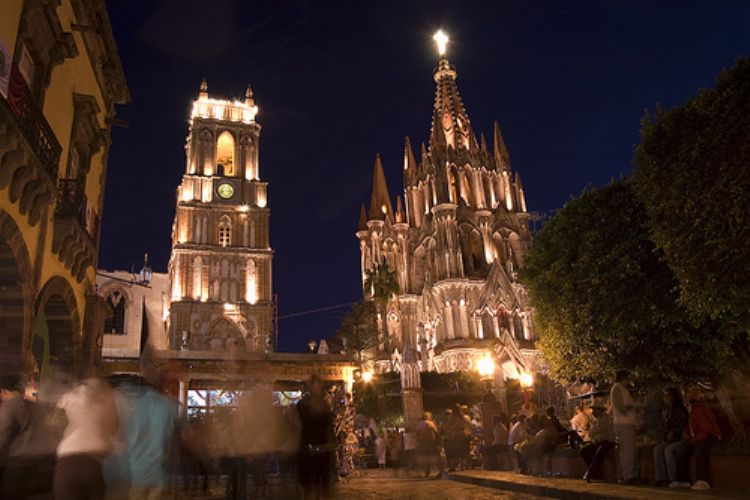
Mexican cuisine, rich in its variety and ingredients, shi...

Baja California has a great tourism potential that can be defined as complex and dynamic for being a generator of economic and social development, as well as a promoter and the region's culture and history, contributing to family integration and the development of its communities.
WINE ROUTE
This state's wine route makes it the ideal destination for family vacations because it offers visitors a vast array of attractive sites and services ranging from the smallest to the largest wine producing companies; from country restaurants to the finest and most demanding gourmet table. This route offers comfortable resorts and bed & breakfast hotels, camping sites, water resorts, museums, art galleries and wine boutiques, crafts centers and natural sites.
ECOTOURISM AND ADVENTURE ROUTE
For those with a passion for nature, there are the Natural Protected areas of Parque Nacional Constitución (1 hour drive from Ensenada) and Sierra de San Pedro Martir (3 hour drive from Ensenada), located on the north of the state, consisting of densly tree-lined forests, ideal for camping and enjoying the fresh oak, pine and holm tree scents. Well equipped for hosting families wishing to have a gratifying contact with nature, Parque Nacional Constitución has cabins, restaurants and ecotourism ranches offering horseback rides. While Sierra de San Pedro Martir boasts Picacho del Diablo, the highest point of the peninsula (3,0905 m) and the National Astronomic Observatory, the second largest telescope in Latin America.
MISSIONS ROUTE
Located in the middle region of Camino Real de las Californias, which used to span from the southeast point of the peninsula to Napa Valley in the current State of California, USA. The missions, established by the feats of Jesuit, Franciscan and Dominican priests between the 17th and 19th centuries who had the mission of evangelizing Baa California, were key establishments for the expansion of the Spanish Empire. These included a temple, cloisters for the religious men, workshops, a cemetery and even prisons. Together, they represented the pioneering political, economic and social institutions of New Spain.
Such legacy is still preserved on the ancient mission stone murals, standing alone in the now deserted plains and turned into cultural and education centers for numerous towns and history museums united in the route created by this priceless cultural heritage of Baja California.
ROCK PAINTINGS ROUTE
The archeological wealth of Baja California is expressed on the cave paintings scattered throughout the peninsula, representing one of its most important attractions. El Vallecito is the best-known site in the state, located to the northeast of La Rumorosa town (peninsula's north). Because of the distance, it is recommended to plan a full-day tour for enjoying the 200 hectares of rocky formations exhibiting notorious picture groups under various themes, from abstract to geometrical, up to figurative human forms, suns, moons, animals, etc. Its most famous painting is El Diablito; anthropomorphous drawing in red paint with two wavy lines in the shape of horns that mysteriously points to the morning of the Winter Solstice, when a ray of sun directly and exclusively lights El Diablito's eyes, granting it a heightened seasonal significance.
The rock paintings found in the caves and surroundings of the Francisco Sierra and the Guadalupe Sierra in the El Vizcaino Desert have a great world-wide historical value. The natives that painted these murals outlined giant human and zoomorphic figures using red, black, white and yellow paint.
The authors of these rock paintings are unknown. When they were discovered by the first Spanish conquerors, the Cochimà tribe that lived in the region denied making them, but their oral tradition spoke of their ancient giant authors.
The site was declared Human Heritage by UNESCO in 1993 and the National Anthropology and History Institute is responsible for its preservation. Tourists wishing to visit these sites must hire a guide from the Institute.
WHALE WATCHING AT OJO DE LIEBRE AND SAN IGNACIO LAKES
The gray whale makes one of the longest crossings in order to mate, give birth and raise its calves. They travel about 9700 km from their home in the Siberian and Alaskan seas to Baja California's shores. At 5 km/hour, it takes them about three months to reach the Ojo de Liebreand San Ignacio coast.
Once the calves are born, the very protective mothers dedicate many days to teach them survival skills and tricks, training them for the long trip back north. The long trip back home will start only when the lessons are dutifully concluded.
Gray whales were once in the brink of extinction, but thanks to the protection of these lakes as part of the Biosphere Reserve of El Vizcaino, their population has increased in the last years.
Whale watching season in Mexico runs from December 15th to April 15th. Visitors can also spot –though less frequently- dolphins, sperm whales, blue whales and humpback whales, as well as orcas.
LOS CABOS
Los Cabos is one of the most beautiful tourism sites in Mexico, as well as one of the most successful. Located in the southern tip of the peninsula, Los Cabos includes the city and bay of Cabo San Lucas and the municipal capital city of San Jose del Cabo. Both destinations are appealing for those longing to relax by the sea, play golf or go sport fishing.
This tourist paradise has also become home to a large number of retired Americans and Canadians, mainly because of its privileged location and the support it receives from the federal government.

Mexican cuisine, rich in its variety and ingredients, shi...

Traditionally, the Comisión Federal de electricida...

Since we are located in a great seismic zone of the world...

One of the most important painters of Mexican art during ...

The Magical Towns of Mexico are cities that have witnesse...

In the year 1531, as told by the historical documents, to...